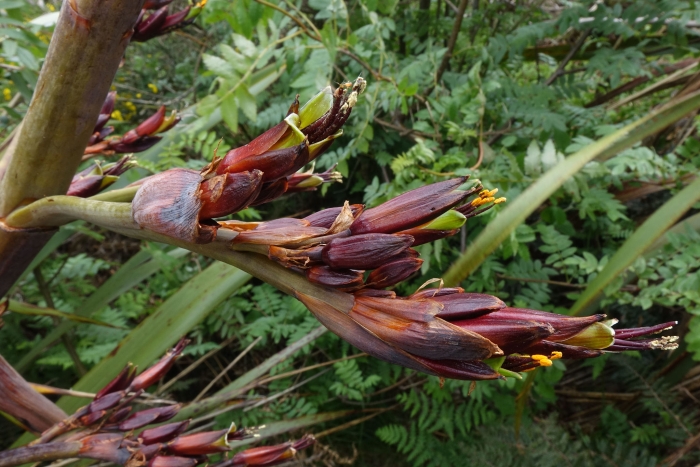Mountain Flax
(Phormium colensoi)
Mountain Flax (Phormium colensoi)
/
/

John Barkla
CC BY 4.0
Image By:
John Barkla
Recorded By:
Copyright:
CC BY 4.0
Copyright Notice:
Photo by: John Barkla | License Type: CC BY 4.0 | License URL: http://creativecommons.org/licenses/by/4.0/ | Rights Holder: John Barkla | Publisher: iNaturalist | Date Created: 2016-12-03T13:32:01-08:00 |




















































Estimated Native Range
Summary
Phormium colensoi, commonly known as Mountain Flax, is an evergreen perennial herb native to New Zealand, where it thrives in a variety of habitats including coastal areas, swamps, and along riverbanks, as well as in grasslands and subalpine to alpine regions. It can grow up to 2 meters in height and width, with robust, sword-shaped leaves that can vary in color from green to bronze. The plant produces tall flower spikes in spring and summer, bearing tubular flowers that range in color from yellow to red-orange, which are attractive to birds and insects. The flowers are followed by distinctive twisted seed pods.
Mountain Flax is valued for its architectural form and the textural contrast its bold foliage provides in garden settings. It is used in a range of landscaping applications, including as a specimen plant, in mass plantings for ground cover, and for erosion control on slopes. It is adaptable to a variety of soil conditions but prefers well-drained soils and can tolerate both full sun and partial shade. While it requires moderate watering, established plants are quite drought-tolerant. It is generally pest-free but can be affected by Phormium mealybug and leaf spot.CC BY-SA 4.0
Mountain Flax is valued for its architectural form and the textural contrast its bold foliage provides in garden settings. It is used in a range of landscaping applications, including as a specimen plant, in mass plantings for ground cover, and for erosion control on slopes. It is adaptable to a variety of soil conditions but prefers well-drained soils and can tolerate both full sun and partial shade. While it requires moderate watering, established plants are quite drought-tolerant. It is generally pest-free but can be affected by Phormium mealybug and leaf spot.CC BY-SA 4.0
Plant Description
- Plant Type: Herb
- Height: 3-4 feet
- Width: 3-7 feet
- Growth Rate: Slow, Moderate
- Flower Color: Yellow, Orange, Red
- Flowering Season: Spring, Summer
- Leaf Retention: Evergreen
Growth Requirements
- Sun: Full Sun, Part Shade
- Water: Medium
- Drainage: Medium, Slow
Common Uses
Border Plant, Deer Resistant, Drought Tolerant, Low Maintenance, Potted Plant, Salt Tolerant, Showy Flowers, Street Planting, Water Garden
Natural Habitat
Native to coastal areas, swamps, riverbanks, grasslands, and subalpine to alpine regions of New Zealand
Other Names
Common Names: Wharariki
Scientific Names: , Phormium cookianum, Phormium colensoi, Phormium cookianum subsp. hookeri, Phormium hookeri, Phormium colensoi var. variegatum, Phormium forsterianum, Phormium tenax var. cookii,
GBIF Accepted Name: Phormium colensoi Hook.f.